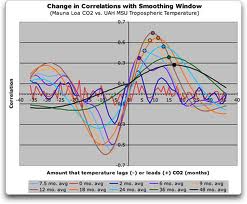Image smoothing (smooth image)
image smoothing (Smooth image ):
Photos comprise rich and well-structured visual information. In human visual perception, edges are effective and expressive stimulation, vital for neural inter
presentation to make the best sense of the scene. In manipulating and understanding pictures, high-level inference with regard to salient structures was intensively attended to. Research following this line embodies generality and usefulness in a wide range of applications, including image recognition, object classification, segmentation, and many other smooth image and non-photo realistic rendering tasks.
Notation :
Image = 2D array of pixels
Pixel = intensity (scalar) or color (3D vector)
Ip = value of image I at position: p = ( px , py )
F [ I ] = output of filter F applied to image I
in this paper present a new smooth image tool, helpful
for enhancing and characterizing fundamental image constituents,
i.e., salient edges, and in the meantime for diminishing insignificant
details. Method relates in spirit to edge-preserving
smoothing [ Tomasi and Manduchi 1998; Durand and Dorsey 2002;
Paris and Durand 2006; Farbman et al. 2008; Sub retal. 2009;
Kass and Solomon 2010] that aims to retain primary color change,
and yet it differs from them in focus ,in essence and in mechanism.
Our objective is to globally maintain and possibly enhance the most
prominent set of edges by increasing steepness of transition while
not affecting the overall acutance. It enables faithful principal structure
representation.
Strategy for Smoothing Images
Images are not smooth because adjacent pixels are different.
Smoothing = making adjacent pixels look more similar.
Smoothing strategy pixel -> average of its neighbors.
Algorithmic-ally, we propose a sparse gradient counting scheme in
an optimization framework. The main contribution is a new strategy
to confine the discrete number of intensity changes among neighboring
pixels, which links mathematically to the L0norm for information
sparsity pursuit. This idea also leads to an unconventional
global optimization procedure involving a discrete metric,
which solution enables diversified of the edge manipulation according to
saliency. The qualitative effect of our method is to thin salient
edges, which makes them easier to be detected and more visually
distinct. Different from color quantization and segmentation, our
enhanced edges are generally in line with that original . Even
small objects resolution and thin edges may be faithfully maintained
if they are conspicuous in structurally . The framework is general and finds so many applications. We can apply
it to compression artefact degraded recovery of clip-art. High quality results can be obtained in the experiments which are extensive . Our method can also profit edge extraction, a fundamentally important operator,
by effectively removing noise part , even of slight blurriness, and unimportant details , making the results immediately usable in image abstraction and pencil sketch production. In traditional decomposition of layer , with an additional step to
avoid structure over-enhancement, our method is applicable to detail enhancement based on possibly to HDR tone mapping , and separating layers after parameter tuning. We show several examples along with discussion of limitations that our method might cause over-sharpening when strong smoothing is applied for large illumination variation spanning dozens of pixels .
1D Smoothing:
We enhance edges of highest-contrast by confining the number of nonzero
gradients, if smooth image is achieved in a global manner.
To begin with, we denote the input discrete signal by g and its
smoothed result by f . Our method counts amplitude changes discretely
2D Formulation:
In 2D image representation, we denote by I the input image and by
S the computed result. The gradient ∇Sp = (∂xSp, ∂ySp)T for each
pixel p is calculated as colour difference between neighbouring pixels
along the x and y directions
Q1: What is 1D image formulation?
Ans: We enhance edges of highest-contrast by confining the number of nonzero
gradients, if smooth image is achieved in a global manner.
To begin with, we denote the input discrete signal by g and its
smoothed result by f . Our method counts amplitude changes discretely called 1D smoothing.
Q2: What is 2D image formulation ?
Ans: In 2D image representation, we denote by I the input image and by
S the computed result. The gradient ∇Sp = (∂xSp, ∂ySp)T for each
pixel p is calculated as colour difference between neighbouring pixels
along the x and y directions called 2d formulation.
Q3: how many types of imageformulation are there?
Ans: 2 types,1D and 2D formulation.
Q4: Image is equal to how much pixels?
Ans: Image = 2D array of pixels
Q5: Pixel is equal to what parameter?
Ans: Pixel = intensity (scalar) or color (3D vector).
Tell us Your Queries, Suggestions and Feedback
One Response to Image smoothing (smooth image)
« Photo editing by Image sharpening Histogram based processing (About image processing ) »






image smoothing is a technique of image processing .this article is about image processing that is to smooth a data set is to create an approximating function that attempts to capture important patterns in the data, while leaving out noise or other fine-scale structures/rapid phenomena.